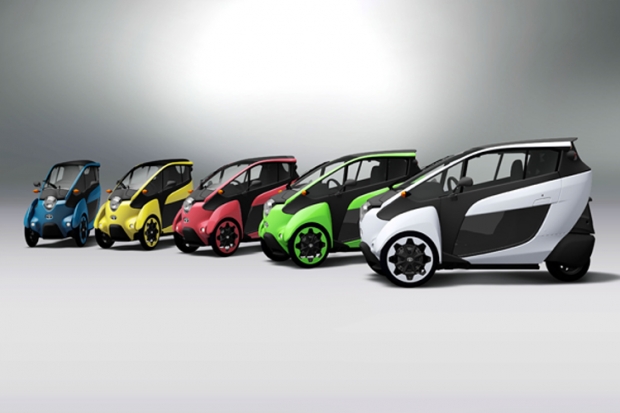Toyota has launched the first public trials of its ultra-compact i-Road electric three-wheeled “personal mobility vehicle” to find out how it shapes up in the cut-and-thrust of real-world urban driving.
Consumer testing in Tokyo is set to run from 24 March on through to early June, with 10 of the single-seater vehicles taking to the city streets. The 20 people involved in the programme range from industry experts through to members of the general public, so that Toyota can gain a wide range of feedback on what i-Road is like to drive, how easy it is to use around town, how it affects people’s decisions about what journeys to make and driver satisfaction.
The vehicles are based on the concept versions shown at last year’s Tokyo motor show, but with adjustments to improve visibility, ease of use and manoeuvrability. Its compact, slim shape and 300kg kerb weight make i-Road as nimble to handle in traffic as a scooter, but with car-like stability thanks to its two-at-the-front-one-at-the-rear wheel configuration and a clever, Toyota-engineered leaning attitude when cornering.
More research into i-Road’s potential as a valuable addition to community-based transport networks is under way in Toyota City, where it has recently been introduced into the experimental Ha:mo low carbon urban transport project. It is also coming to Europe this year with two-seater models set to take part in a vehicle sharing programme that will operate in the French city of Grenoble over the next four years.
Toyota i-Road technical specifications (Tokyo and Toyota City test model)
Overall length (mm) 2,345
Overall width (mm) 870
Overall height (mm) 1,455
Wheelbase (mm) 1,695
Kerb weight (kg) 300
Tyre size – front 80/90R16
Tyre size – rear 120/90R10
Min. turning radius (m) 3.0
Powertrain 2 electric motors
Max. speed (mph) 37
Cruising range on single charge (miles) 30 (at steady 18.6mph)
Battery type Lithium-ion


